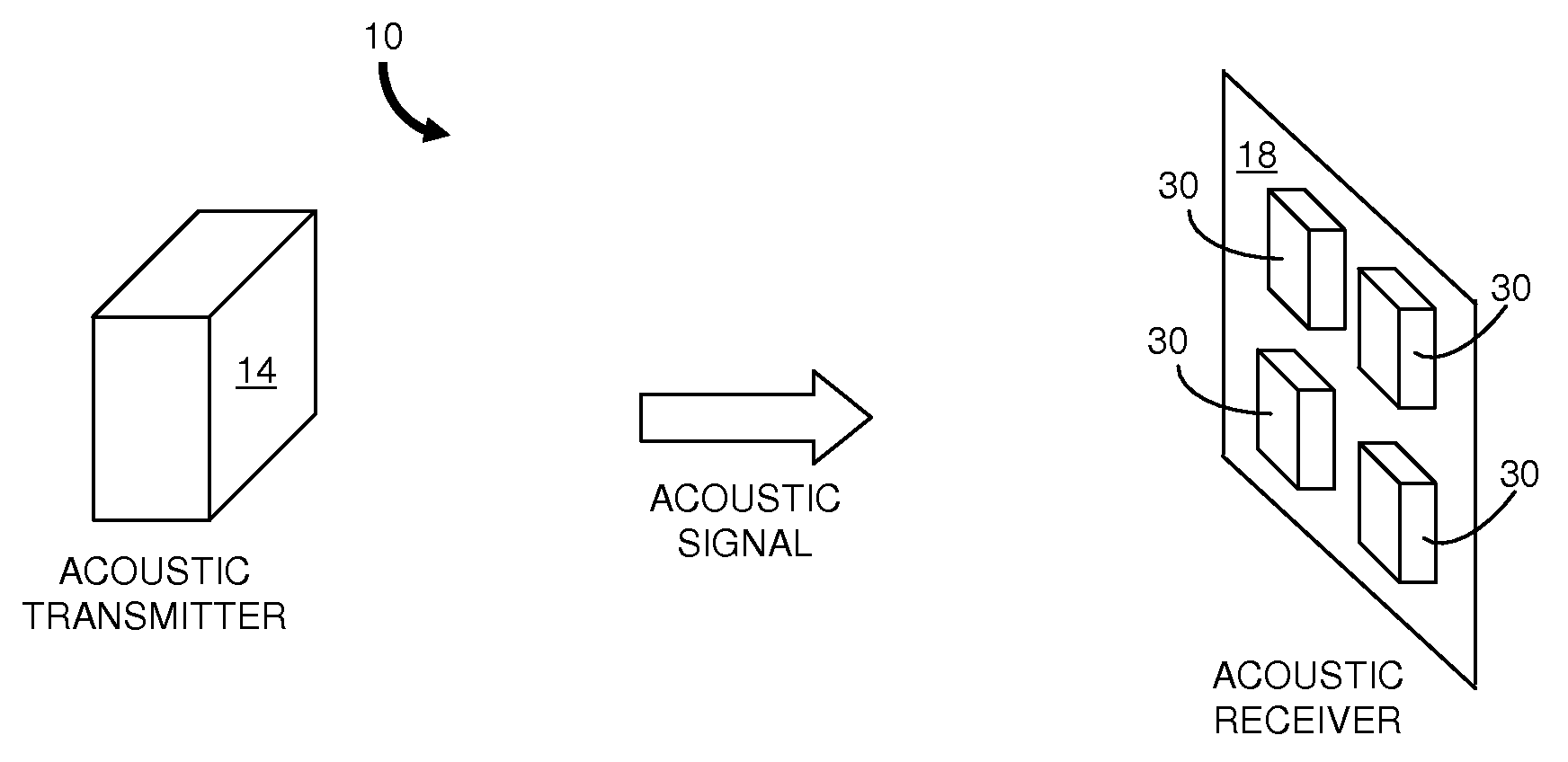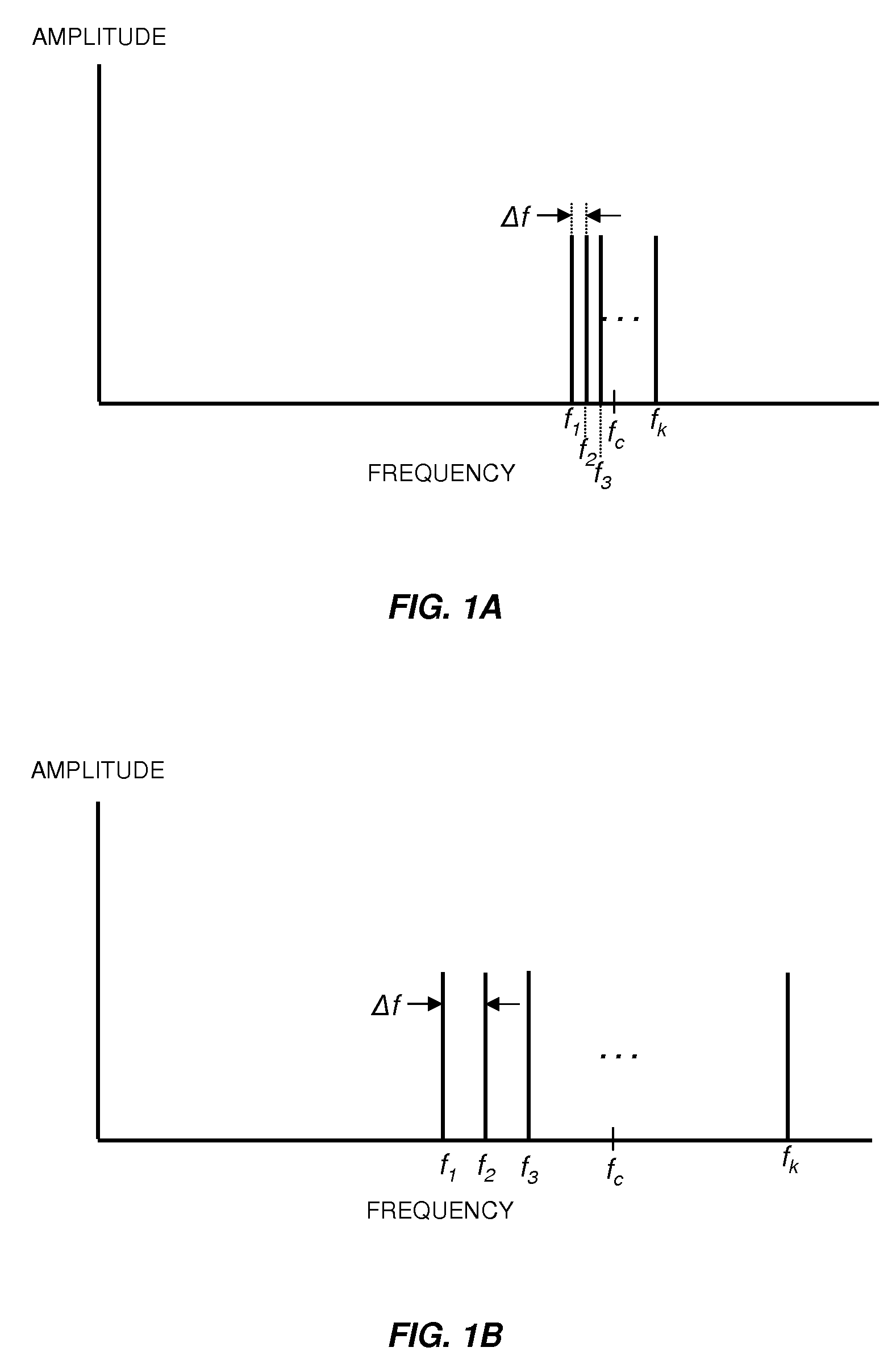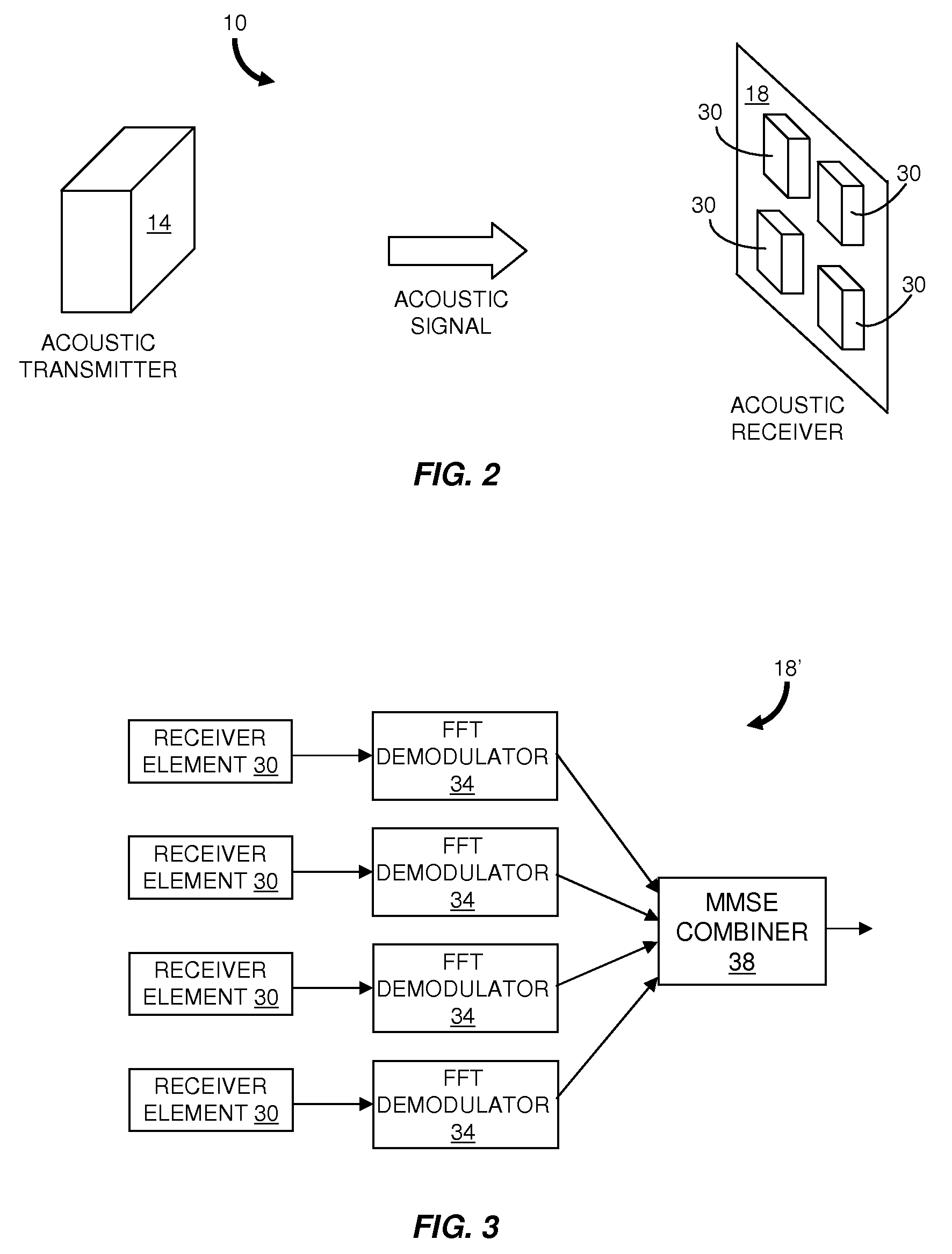Method of non-uniform doppler compensation for wideband orthogonal frequency division multiplexed signals
a doppler compensation and orthogonal frequency division technology, applied in the field of communication based on orthogonal frequency division multiplexing (ofdm), can solve problems such as performance degradation, doppler distortion, and mismatch between local oscillator frequency and other issues
- Summary
- Abstract
- Description
- Claims
- Application Information
AI Technical Summary
Problems solved by technology
Method used
Image
Examples
Embodiment Construction
[0022]The invention relates to a method for OFDM signal detection on Doppler-distorted, time-varying multipath channels and is based on low-complexity post-FFT signal processing. Minimum mean square error (MMSE) combining of signals is performed for signals received at a receiver array using adaptive channel estimation. Non-uniform Doppler compensation of subchannels is performed using a single adaptively estimated parameter associated with the Doppler rate.
[0023]Referring to FIG. 2, an acoustic underwater communications system 10 includes an acoustic transmitter 14 and an acoustic receiver 18. The transmitter 14 and the receiver 18 can each be mounted to an underwater platform. The position of the transmitter 14 relative to the receiver 18 can vary with time thereby defining a relative motion which can also vary with time. The receiver 18 includes an array of M spatially-distributed receiver elements 30 (only four are shown for clarity). Although shown as a 2×2 array, the receiver ...
PUM
 Login to View More
Login to View More Abstract
Description
Claims
Application Information
 Login to View More
Login to View More - R&D
- Intellectual Property
- Life Sciences
- Materials
- Tech Scout
- Unparalleled Data Quality
- Higher Quality Content
- 60% Fewer Hallucinations
Browse by: Latest US Patents, China's latest patents, Technical Efficacy Thesaurus, Application Domain, Technology Topic, Popular Technical Reports.
© 2025 PatSnap. All rights reserved.Legal|Privacy policy|Modern Slavery Act Transparency Statement|Sitemap|About US| Contact US: help@patsnap.com



